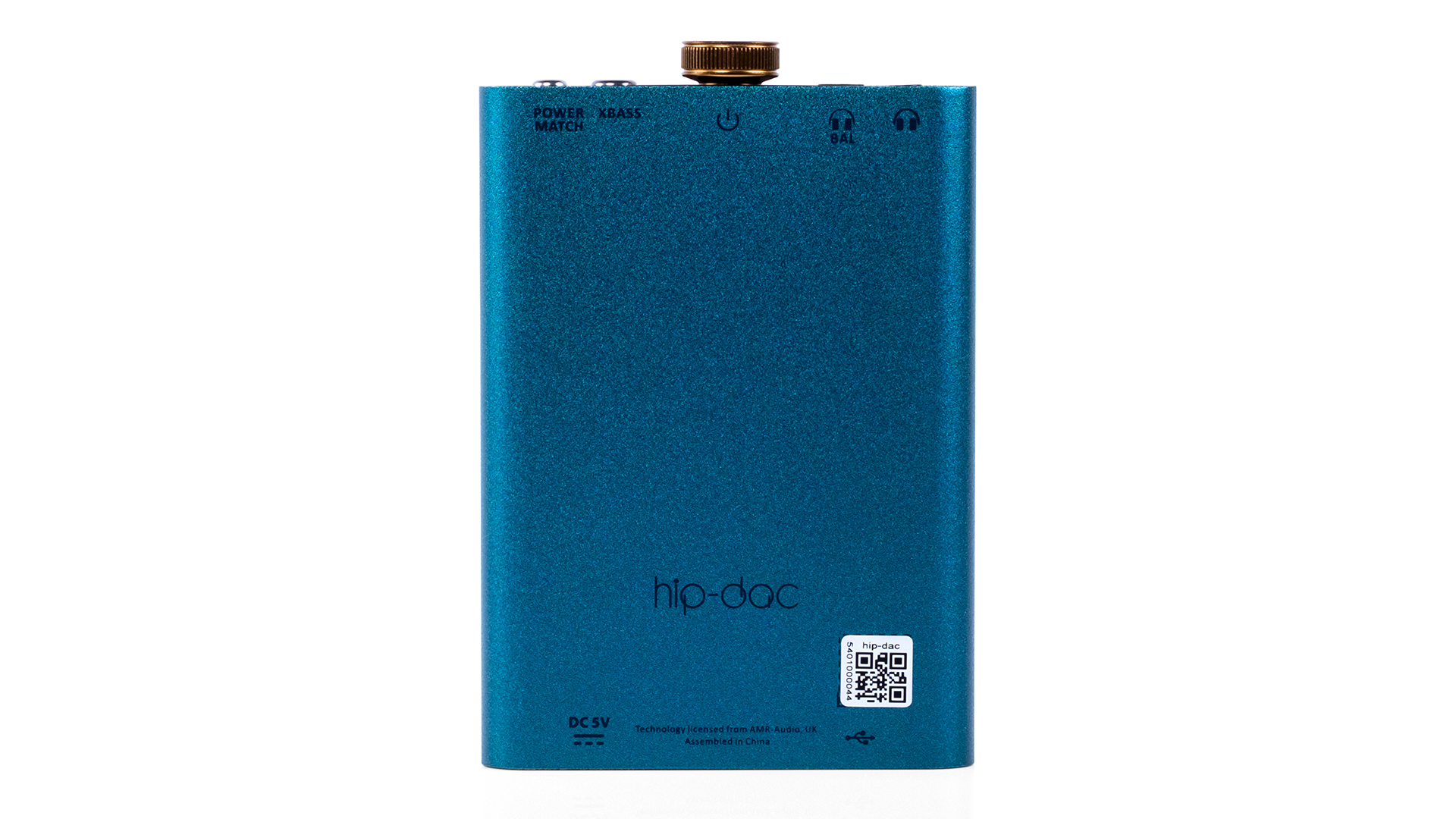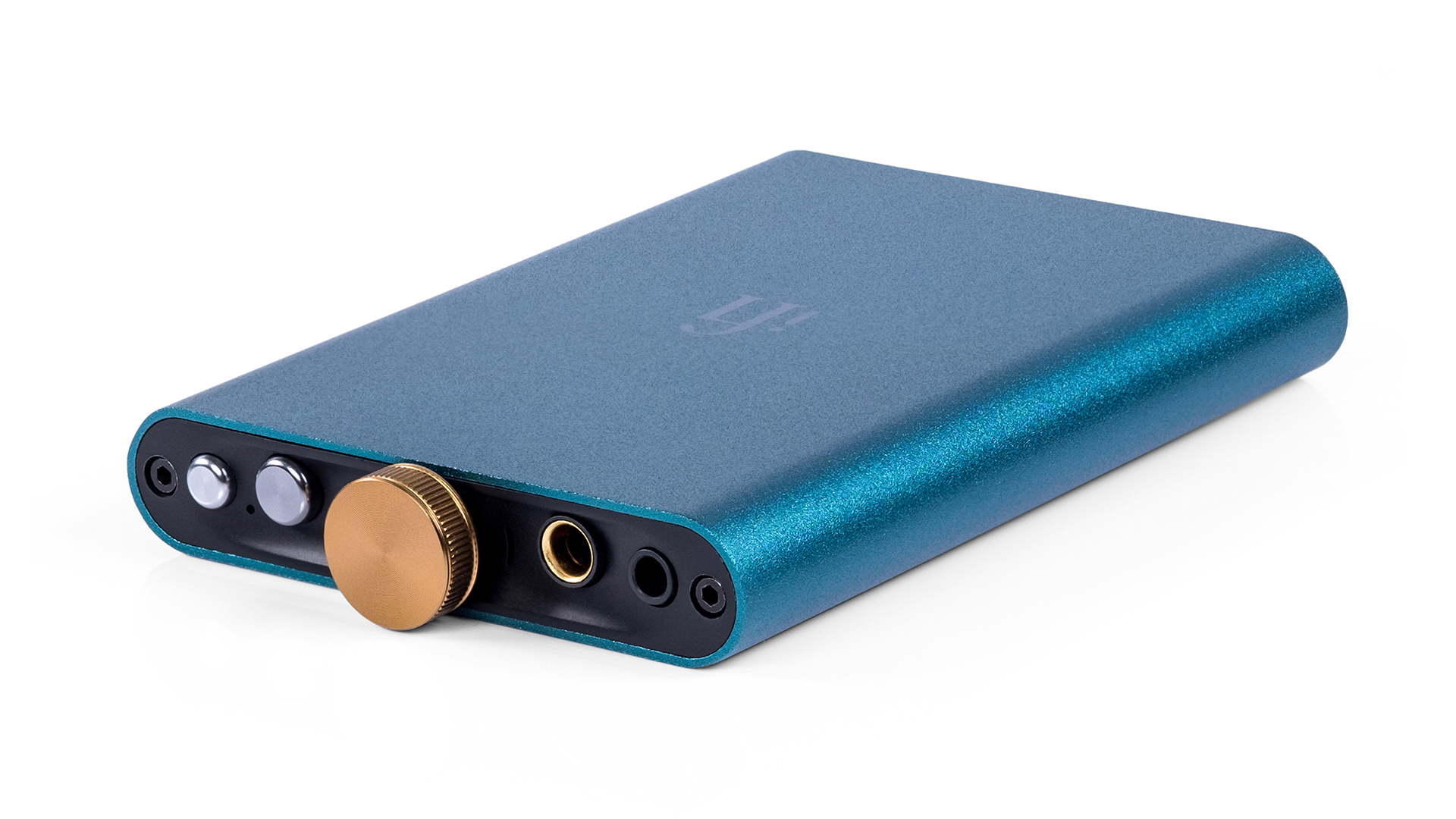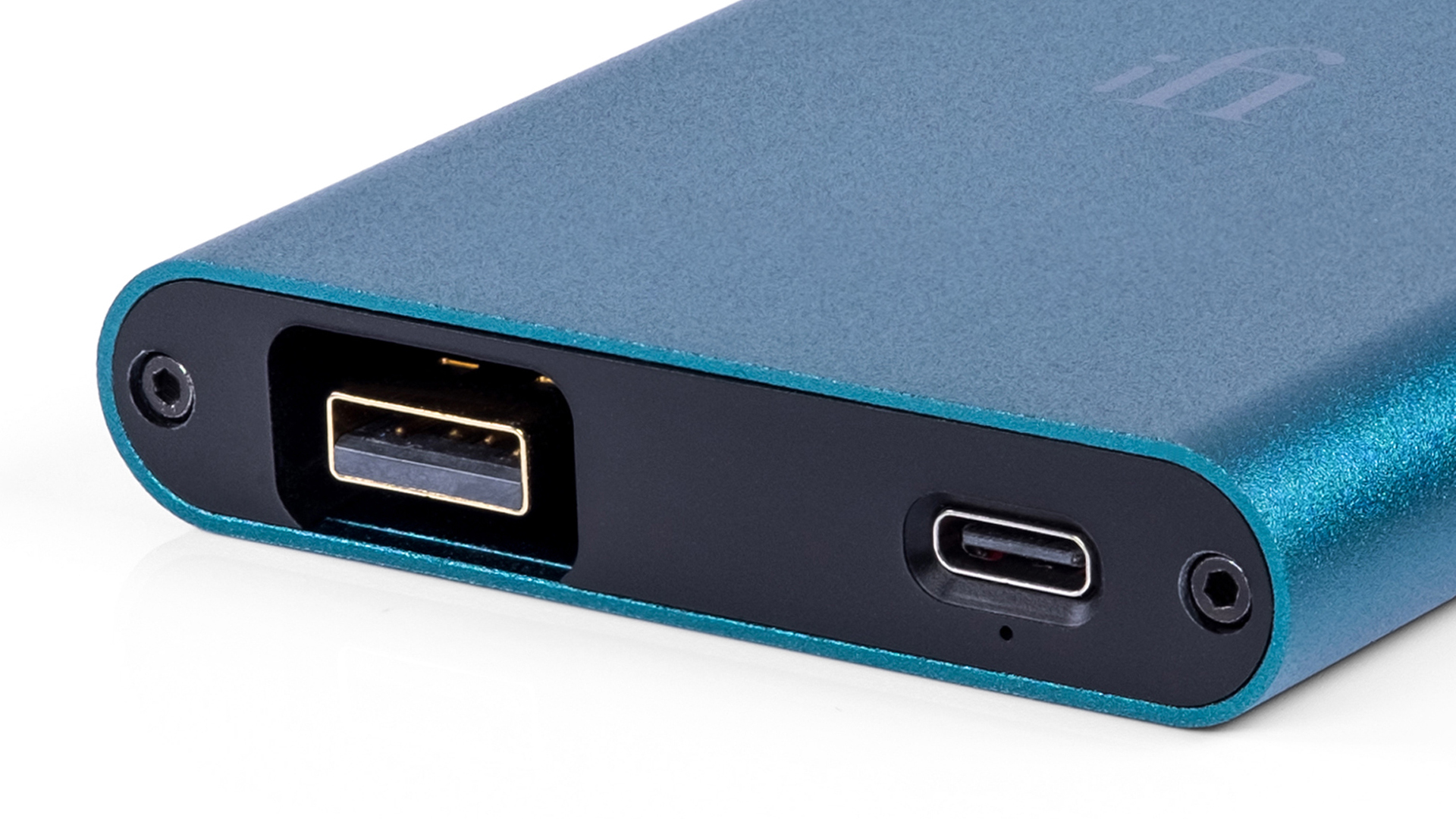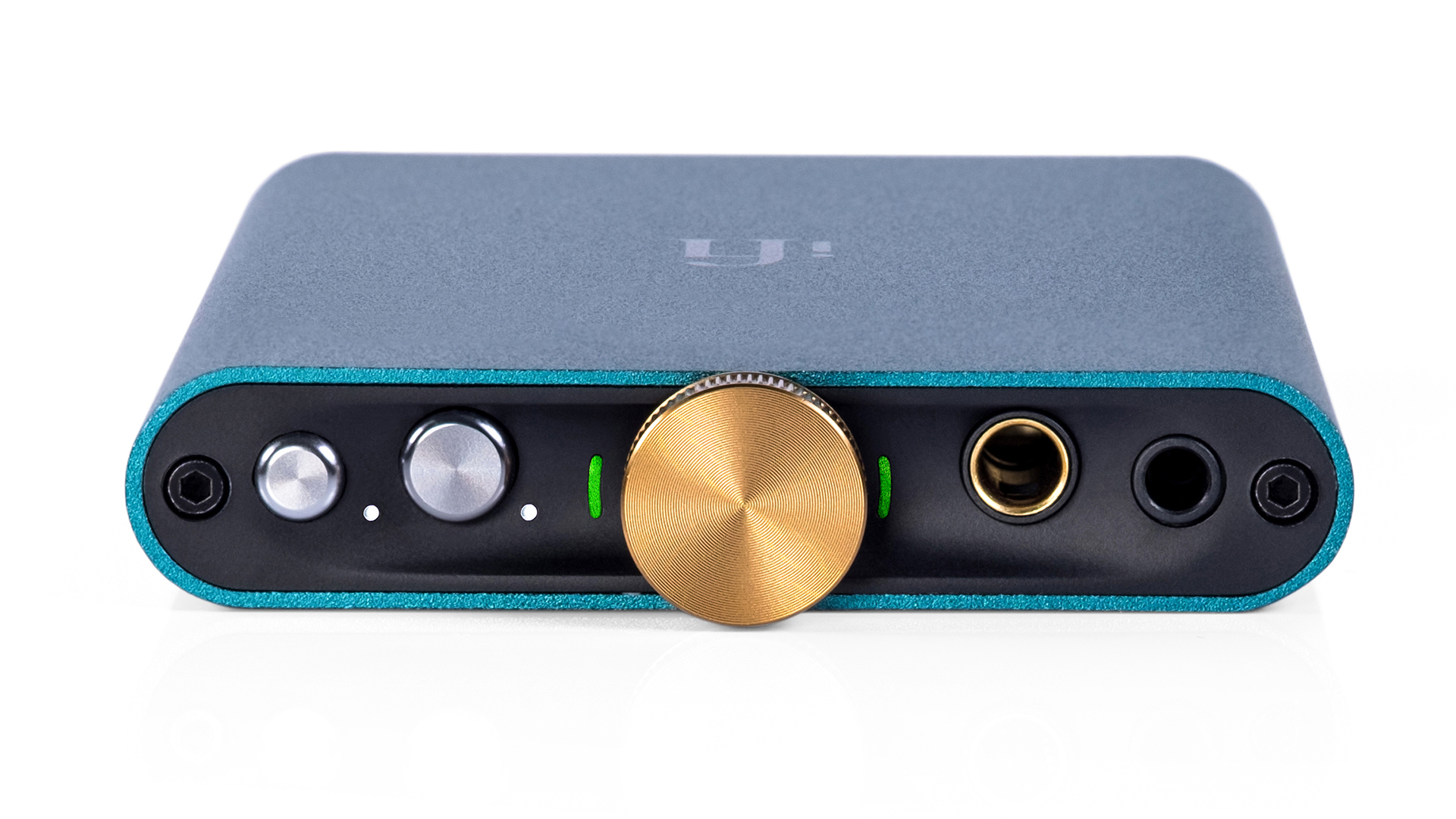What Hi-Fi? Verdict
If you’re looking for a high-quality portable DAC the iFi hip-dac has to go on your shortlist.
Pros
- +
Easy-going but engaging sound
- +
Battery power
- +
Fine build and finish
Cons
- -
Up against tough competition
- -
Larger than some rivals
- -
Sub-par sampling rate indicators
Why you can trust What Hi-Fi?
iFi looks determined to dominate the affordable digital-to-analogue converter market. Having previously been the recipient of numerous four-star verdicts, the company's more recent Zen devices have both been deemed worthy of five stars.
For this hip-dac, iFI has taken the guts of the excellent, desktop-based Zen DAC and crammed them into a smaller, battery-powered form. The name comes from its resemblance to a hip flask.
Build


Formats supported DSD, DXD, PCM, MQA
Digital inputs USB 3.0
Headphone outputs 3.5mm, 4.4mm
Max power 4W
Dimensions (hwd) 1.4 x 7 x 10.2cm
Weight 125g
The hip-dac is a neat, nicely made unit with an extruded petrol blue aluminium case that’s about the size of a pack of cards. The finish is neat and the metal volume control (that also doubles as the power switch) has a pleasantly damped feel.
Input is limited to a male USB Type A. Using this instead of the more usual female option means that the DAC can connect directly to Apple’s Lightning-to-USB (camera adaptor cable) needed to use an iPhone as a source. You’ll have to buy that Apple cable separately, but iFi provides short cables that terminate with either USB Type A or USB Type C in the box.
There are two outputs – a conventional 3.5mm headphone jack and a balanced Pentaconn 4.4mm alternative. The balanced output is claimed to take full advantage of the DAC’s similarly configured internal circuitry, and gives the hip-dac something of a USP compared to most rivals. None of our favourite headphones at this level come with a balanced connection, so we’ll park its inclusion under interesting, rather than essential.
A 2200mAh battery provides internal power, and there’s a small LED under the USB Type C charging port that indicates remaining reserves. A full charge is claimed to take around three hours and gives eight to 12 hours of use. Of course, such figures are merely guidelines and much depends on the headphones and volume levels used – a point reinforced during our testing.
We try the hip-dac with a variety of headphones, from Shure’s SE535 in-ears to Sennheiser’s Momentum 2.0 over ears and Beyerdynamic’s demanding T1s. The hip-dac barely managed three hours driving the latter before needing a charge. Thankfully, it was much better with the others.
The latest hi-fi, home cinema and tech news, reviews, buying advice and deals, direct to your inbox.
Features

On the front of the DAC, there’s a button that changes the gain of the internal amp. This makes headphone matching easier, with less sensitive models needing the volume boost. We’re not usually fans of bass emphasis controls, but the one on this unit is subtle enough to be useful. It adds an appropriate degree of low-frequency heft to the Shure in-ears without sounding overblown.
iFi’s products rarely disappoint on the compatibility front, and this one is no different. The hip-dac will work with up to 32-bit/384kHz PCM and DSD256 files. MQA is also on the menu. In short, there's a great chance that the hip-dac will play whatever you want it to.
There’s a pair of LEDs, one on either side of the volume dial, that indicate the sampling rate and type of file. They’re not particularly informative, as they don’t differentiate between the most common PCM file types. For example, 44.1kHz and 96kHz files are both represented by the same green light. Equally, everything from 176.4 to 384kHz files is indicated by yellow. Even the DSD files are lumped together without much thought. iFi needs to do better here.
The hip-dac is up against some tough competition in this part of the market. The likes of the Cyrus soundKey and Zorloo’s Ztella set high standards for well below the £100 mark, while Audioquest’s DragonFly Red delivers exceptional sound quality, especially at its current £135 price. For purely portable use, Audiolab’s bluetooth M-DAC nano (£139) remains hard to beat. Yet, we still feel that there’s a place in the market for the hip-dac, even against such capable opposition.
It’s not as small as any of these rivals, and obviously can’t match the wireless connectivity of the Audiolab, which reigns supreme as far as portability is concerned. But, with battery power, the iFi won’t drain your phone or laptop in the way most of these will. That’s a big plus.
Sound

The hip-dac is a hugely capable performer with the typical easy-going iFi sound. It’s a balanced presentation that’s refined and free of harsh edges. You can listen to the hip-dac for hours and not feel fatigued. Yet unlike some of the company’s older products, this undemanding nature is still partnered with expressive dynamics and pleasing rhythmic precision.
Listen to Neneh Cherry’s Blank Project and the iFi delivers the music with a good amount of punch and drive. Cherry’s distinctive voice comes through with nuance while there’s enough in the way of organisation to keep the instrumental backing easy to follow. Basslines punch through the mix with purpose, agility and power. The lows are a touch rich in absolute terms, but it never goes too far. No part of the frequency range grabs the limelight unduly.
We switch to Mahler’s Symphony No.4 and the iFi responds with a spacious and composed rendition. It’s a little smooth tonally, but that just serves to make it less critical of recording and source quality – an important consideration with a product such as this.
There’s a good sense of scale and focus to the sound, with the hip-dac able to convey the majesty of the piece well. The ability to organise detail into a cohesive and musical whole is obvious here, as the iFi never sounds out of its depth.
Verdict
If you’re looking for a high quality portable DAC, this iFi is well worth a place on the shortlist. The hip-dac’s combination of battery power, fine build and easy-going sound quality makes it one of the front-runners at this level.
SCORES
- Sound 5
- Features 5
- Build 5
MORE:
Read our Cyrus soundKey review
Read our Zorloo Ztella review
Read our Audioquest DragonFly Red review
What Hi-Fi?, founded in 1976, is the world's leading independent guide to buying and owning hi-fi and home entertainment products. Our comprehensive tests help you buy the very best for your money, with our advice sections giving you step-by-step information on how to get even more from your music and movies. Everything is tested by our dedicated team of in-house reviewers in our custom-built test rooms in London, Reading and Bath. Our coveted five-star rating and Awards are recognised all over the world as the ultimate seal of approval, so you can buy with absolute confidence.

